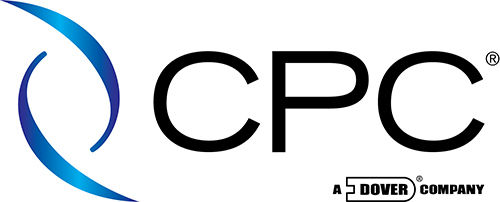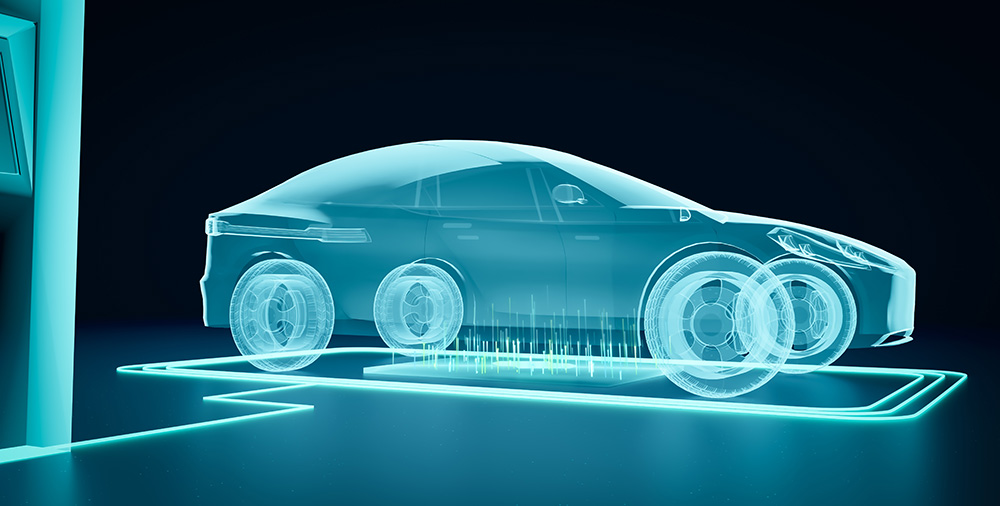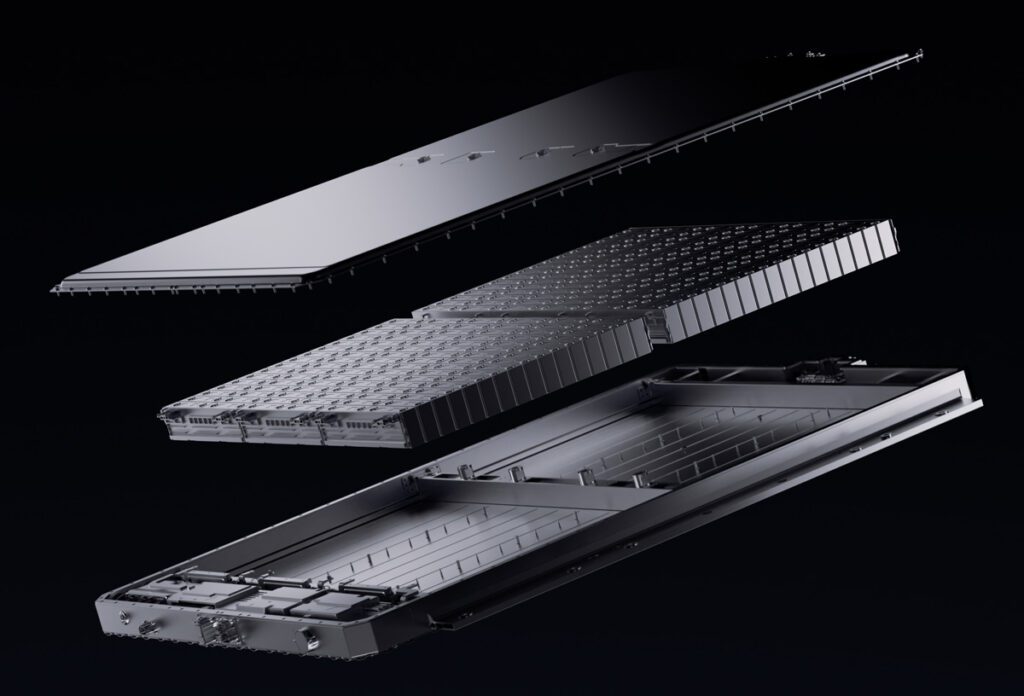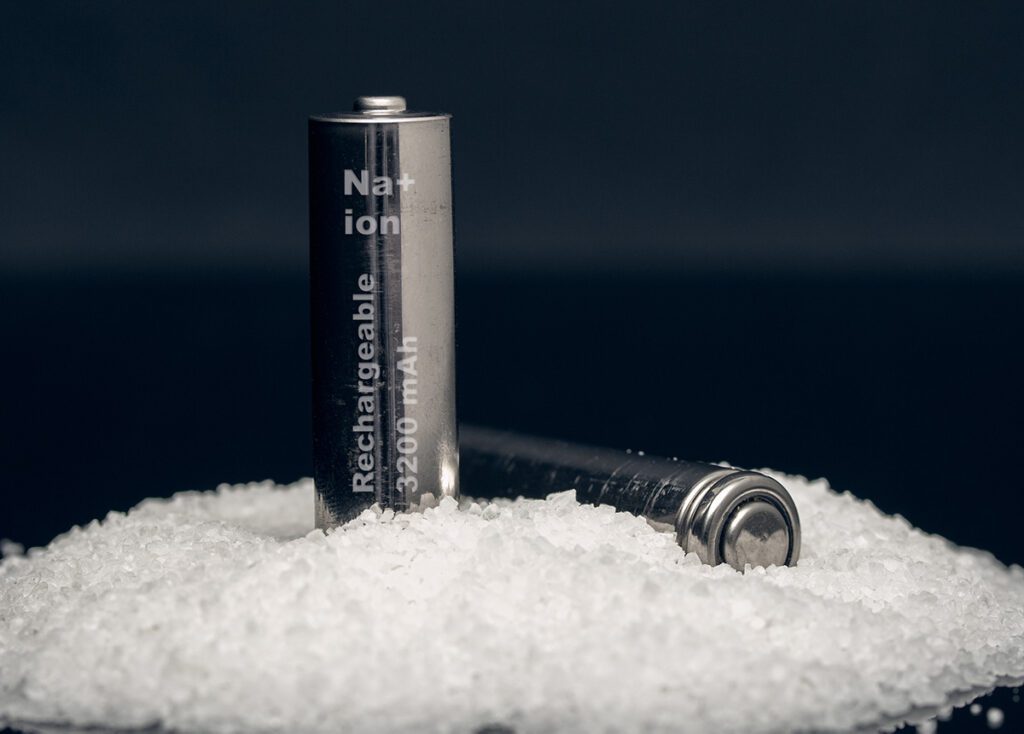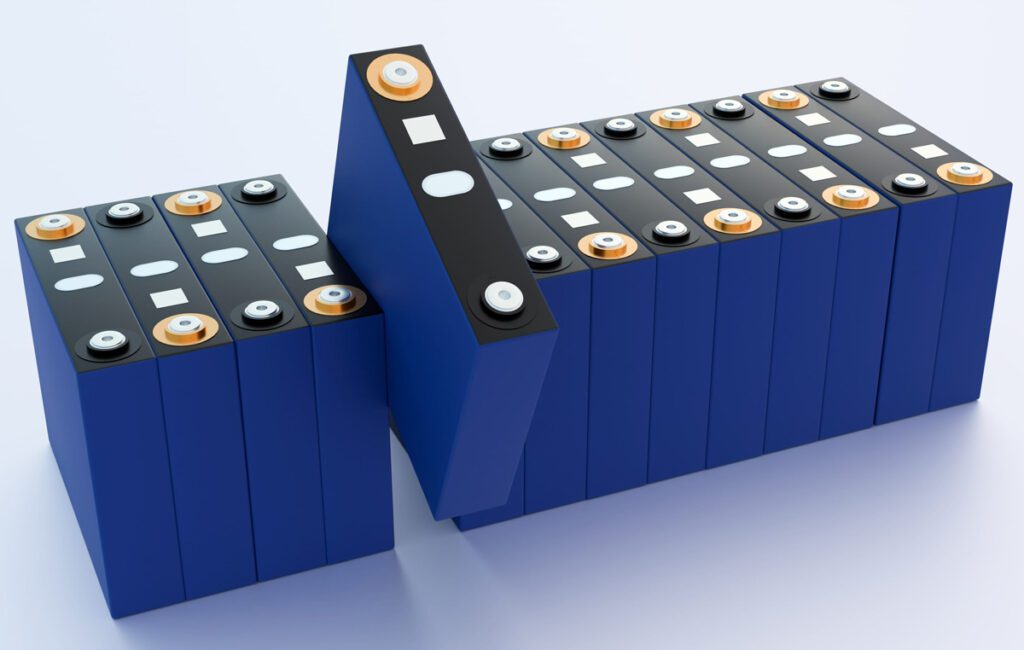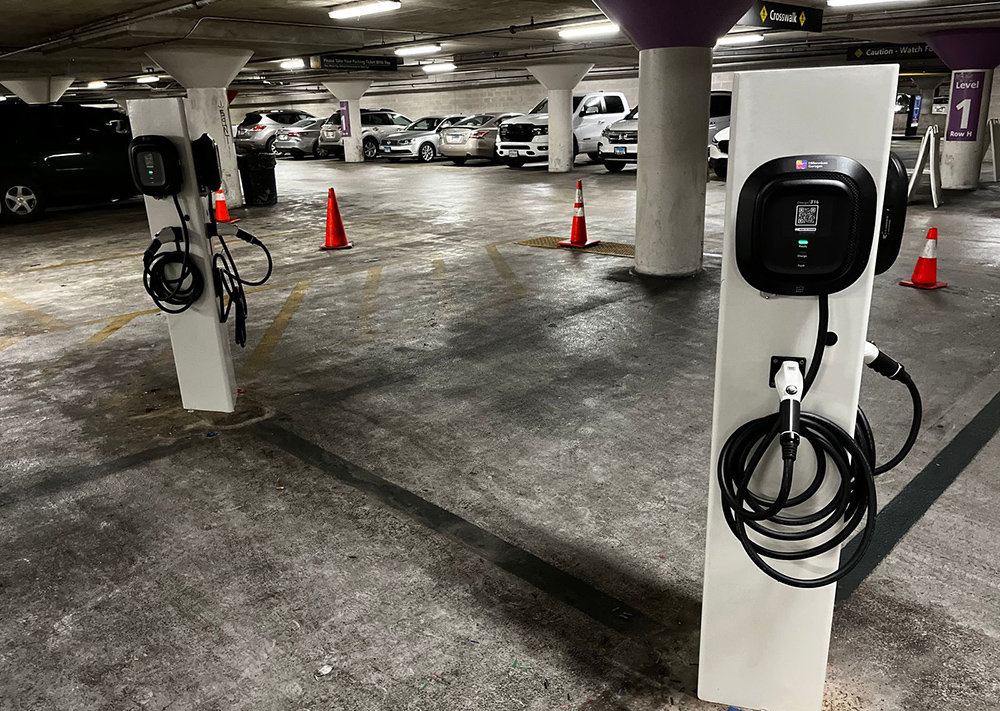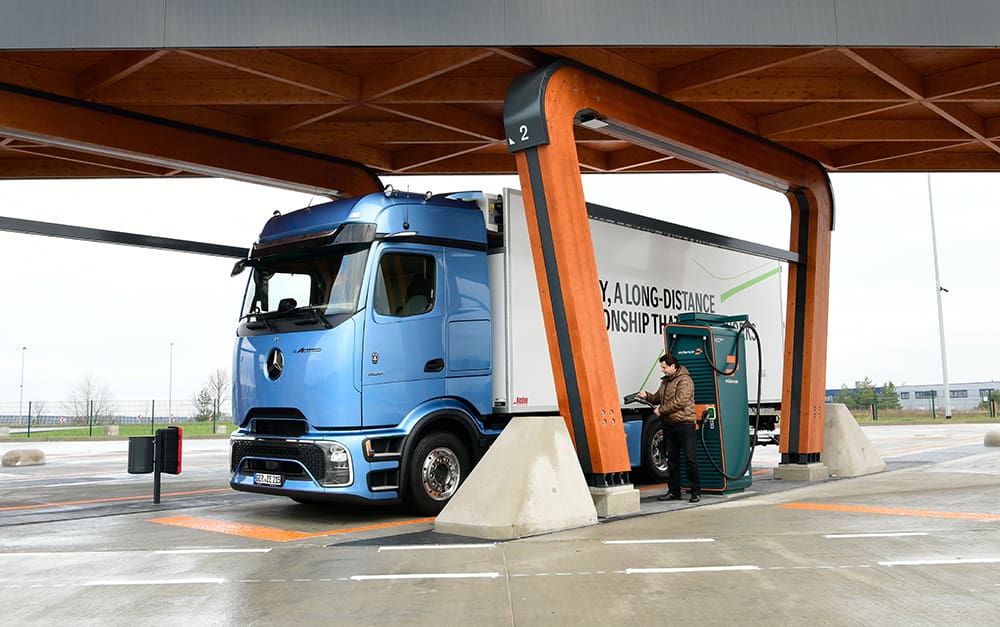The cute, cuddly FIAT 500e EV may have been born only out of regulatory necessity. So what happens if it becomes the best-reviewed new EV in its class? The bar is raised; the game changes. Maybe Chrysler will even concede that it should sell it outside of the Golden State.
Summertime in Sonoma County brings to mind high temperatures, the high season for high-end wine tastings, gorgeous, rolling, vineyard-covered hills, and back roads – twisty, twisty back roads. It was to that environment that Brett Giem, FIAT 500e Chief Engineer, brought his team in the summer of 2012 to test out his pack of “mules.”
“These are essentially cars that are hand-built right here at Chrysler’s tech center,” Giem said. “They had early configurations of the hardware from all the suppliers. Our task was to adapt those parts to behave like production parts and just to make sure everything was working. As those mules came right off of build, they were rough, and then we went through about two or three iterations of calibration refinement.”

The FIAT 500e, the EV version of the gas-powered 500, aka Cinquecento, was to be the first production EV from the Chrysler Group, which announced some plug-in concepts that never really got off the ground in 2009. However, that was before FIAT helped Chrysler out of a bankruptcy and started working toward a full merger that is still in progress. As the FIAT-Chrysler relationship developed, Giem told us that it became obvious that the Cinquecento, a popular little city motorer, would be the first car from the group to electrify.
And so it was that Giem and crew ventured from the Auburn Hills, Michigan home office of Chrysler to Sonoma County, in order to challenge the 500e on some of the typical roads of California, where the car would be initially sold exclusively as a compliance car. As they were iterating what Giem called the “rough” early mules through different setups with the suspension tuning staff, Darius Kudzma, Performance Engineer, Vehicle Dynamics, had a breakthrough. “I think I’ve got it now,” he told the team. “Let’s drive.”
Rounding the bases
During what Giem called that “summer of revelations,” at least three things happened almost all at once to get the 500e to the next level. The first was Kudzma’s discovery, which helped the ride and handling group figure out how to properly couple the mass of the battery as the car performed handling maneuvers. “We got out of our hotels, jumped in the cars, and it was magic,” Giem said. “The car went from a little bit bobbly, soft, and mushy in the back into a really tight, well-behaved driving experience. We got on first base with that.”
Next, the group learned where the greatest vehicle efficiencies would be. “That was like second base,” Giem said. “Low rolling resistance tires, making sure our aerodynamics were working, how other electrical systems were loading and using our high-voltage battery – they were coming in on target. We knew where we needed to be, and our mules were actually behaving at the same efficiency that our production cars are today.”
“The home run was the efficiency of the powertrain system,” Giem said. The team found a calibration that really felt good – as the accelerator pedal was depressed, the current given to the drive system was just enough – and no more – to make it behave familiarly. “When we put all of those things together, the cars went from the burden car that you took home and wrote up all your problems about, to being so close. I thought, ‘I’ve still got two levels of real production pilots to go; there’s no way we’re not achieving our targets on this car.’”

With nearly a year to go before the 500e’s 2013 release, Giem’s team had dialed in the 500e to the point at which he thought, “We got this thing nailed. This is gonna be a great car.”
Conflicting views
Giem said as much to Plugincars.com, when that site put out one of the first of many glowing reviews of the 500e in April, ahead of its initial on-sale date. It’s hard not to love the 500e at first sight. It looks simply luscious, like you could pop it in your mouth and chew it. But the positive critiques go much deeper than the surface level.
Bravissimo!

“I found the 500e noticeably quicker and more maneuverable than the LEAF. It was a blast tossing the small electric two-seater around the crowded city streets, hills, and highways of L.A…the most affordable, stylish and fun (but somewhat cramped) electric car on the market.”
Brad Berman, Plugincars.com
“The Fiat 500e is just awesome, a nutty electric elf of a car. All dressed up in Playskool aero pieces and available in Life Savers colors, the 500e feels like the big-kid toy the Fiat 500 always wanted to be, with an otherworldly electric hum to go with its whimsical aesthetics…It’s a lot of fun to drive.”
Dan Neil, Wall Street Journal
“The 500e is a blast, and we actually like it better than its liquid-fueled 500 cousin… the heavy battery pack placed low in the 500e means the EV is more surefooted… When you’re driving around the city in the 500e, you quickly forget you’re not driving in a normal car.”
Sebastian Blanco, Autoblog
“Modifications include a sealed front end, smoothed underbody, aerodynamically pleasing 15-inch alloy wheels, redesigned side-mirror caps, and a drag coefficient of 0.311. That’s 6.3 percent lower than a 500 Pop, the most aero-efficient gas model.”
Benson Kong, Motor Trend
“You can hustle up a freeway ramp and easily flow into traffic, accompanied only by the thrum of the tires and whoosh of the wind. In fact, aside from the lack of internal-combustion noises, the 500e feels very much like its regular counterpart. FIAT has done a decent job masking the transition from regenerative to friction braking…Urban-scooter aficionados take note.”
John Lamm, Car and Driver
“…the 500e is quite impressive…this is one of the few cars I’ve driven that are electric converts from gas models where the handling characteristics actually improved… The car is a big rolling wad of electronics, so it’s pretty full of toys. That round TFT dash display screen is very well-done, and the UI and graphical qualities of the displays are extremely high-quality.”
Jason Torchinsky, Jalopnik
“The 2013 Fiat 500e may be a compliance car, but its engineers created an electric car that’s so much fun to drive that seemingly they want it to be more.”
John Voelcker, Green Car Reports
Despite the near-consensus among the critics, the future of the 500e outside of California remains uncertain, and the CEO of FIAT/Chrysler, Sergio Marchionne, has publicly lambasted the 500e – not for its performance or design, but rather for its economics. In a speech to the Society of Automotive Engineers 2013 World Congress in Detroit, Marchionne said of the 500e, “we will lose $10,000 per vehicle. Doing that on a large scale would be industrial masochism.” Amongst his other comments, Marchionne criticized the approach of government regulators making mandates for specific technologies. He would rather be free to explore other technologies, and called natural gas the “cleanest alternative available,” according to the Detroit News. Marchionne also claimed that FIAT is the “most eco-performing automaker in Europe,” and that more fuel economy improvements for ICE vehicles are forthcoming.
Despite Marchionne’s lack of enthusiasm for EVs, some of his seconds in the Chrysler Group have repeatedly hinted that the 500e would be marketed to the masses, and that it could be expanded to sell in different markets. Autoblog reported in April that FIAT may branch the 500e out to Europe, Asia, and other parts of North America, although only after at least a year of exclusive sales in California. Jiyan Cadiz, a product communications manager for Chrysler Group, also told Charged that if the 500e expanded sales in the US, it would start in the other ZEV states, which are New York, Massachusetts, Vermont, Maine, Connecticut, Rhode Island, New Jersey, Oregon, New Mexico, Maryland, Arizona, and the District of Columbia.
 As for Marchionne’s despair over losing 10 grand on every 500e, Dan Neil issued an amusing rebuttal in his very positive Wall Street Journal review of the 500e. He said, “Unless FIAT-Chrysler has a secret plan to power cars with giant, watch-like mainsprings, electrification…will be a growing part of the product story in the US. Why curse it? Would somebody please just tackle the boss?” He also brought up the fact that other industries routinely invest (or lose, depending on your perspective) money to make improvements for the public good. For example, airlines spend millions on quieter planes, and telecoms do the same complying with universal-service requirements. His position is that zero-emission mandates acknowledge that cars carry with them public costs related to pollution, infrastructure, injury, and death.
As for Marchionne’s despair over losing 10 grand on every 500e, Dan Neil issued an amusing rebuttal in his very positive Wall Street Journal review of the 500e. He said, “Unless FIAT-Chrysler has a secret plan to power cars with giant, watch-like mainsprings, electrification…will be a growing part of the product story in the US. Why curse it? Would somebody please just tackle the boss?” He also brought up the fact that other industries routinely invest (or lose, depending on your perspective) money to make improvements for the public good. For example, airlines spend millions on quieter planes, and telecoms do the same complying with universal-service requirements. His position is that zero-emission mandates acknowledge that cars carry with them public costs related to pollution, infrastructure, injury, and death.
You also have to realize that FIAT voluntarily gives up a sizeable chunk of money to make the 500e one of the most affordable EVs to buy, and possibly the most affordable EV to lease. Starting with a base price of $32,500, once you factor in a $7,500 federal tax credit, $2,500 California tax credit, and $2,000 FIAT incentive, the 500e can be yours for a snappy $20,500. That’s still higher than the base-model gas 500, however, the lease price for the 500 Pop model and 500e are identical: $999 down and $199/month for a 36-month lease. Consequently, that made the 500e the best lease deal for a pure EV at press time. Not only that, but FIAT throws in the 500e Pass, an allotment of 12 total days a year of renting any vehicle from Enterprise, so you can take longer trips for which the 500e may not be practical.
For that money, the 500e delivers the best range (87 miles), best highway mileage (EPA 108 MPGe), and competitive combined mileage (EPA 116 MPGe) among similarly-priced EVs, which includes the LEAF, Ford Focus Electric, Honda Fit EV, and others (although the 500e is the smallest compact car of the bunch). Several 500e reviewers feel confident that in pure city driving, the car could reach 100 miles on a single charge. The 500e has the same power battery as the larger LEAF – a 24kWh Li-ion chemistry – and sustains a longer range with comparable mileage ratings.
United States of Charge
FIAT veered away from the air-cooling system that has drawn some harsh criticism from certain LEAF drivers in favor of liquid cooling and heating. California weather can vary from the blistering heat of a Death Valley summer to the bitter cold of a High Sierras winter, so FIAT had to engineer for all conditions.
“For this battery to survive at those types of extreme climates, it wouldn’t work without active thermal management,” Giem said. “We definitely spent a lot of time working through how to use the thermal management, like how much should we heat and when? How much should we cool and when? On the cooling side especially we have a passive cooling mode, where you’re flowing the fluid through the radiator and back to the battery. The chemistry of the battery is always very robust. It’ll always deliver and accept current to the same levels no matter what temperature the car is at. Especially in hot conditions, if you start charging and discharging a very hot battery, it destroys the chemistry and loses its life, and frankly, that’s what we’ve been struggling with now in the Nevada/Death Valley area. On the other end of the spectrum, if the car’s at zero or -20 degrees Fahrenheit, chemistry’s chemistry; it starts getting sluggish. It will not give you all the current that you expect to support good driving, so we keep it warm to always flow electricity correctly.”
Even though all Li-ion batteries are not created equal, some of the public at large can get very suspicious of the entire technology when high-profile mishaps occur, whether in vehicles, airliners or different types of electronics. Although Giem did not get into specifics, he noted that FIAT has prioritized the 500e’s battery safety to try to allay any of people’s concerns. “We know those come from real events, but mostly in non-automotive,” Giem offered. “We’ve all heard about the laptop batteries that had issues. We know cell phone batteries in everyone’s experience just lose performance over time. As we designed the control systems for these batteries, we made sure that very high on our severity rankings were these types of events, and identified the design solutions to make sure they did not happen. We know exactly how it might happen, and we’ve made sure that it cannot happen by way of design.”
A collaboration between Bosch and Samsung (for the cells) supplies the batteries for the 500e, and Bosch also has a hand in the battery packaging, management software, electric motor, and regenerative braking system. But all parties involved – and Giem as the coordinator – faced the challenge of fitting more than 600 pounds of battery pack, spread across 97 Li-ion cells, into the 500e’s compact frame. The pack sits low and centered in the car, which helps give it the low center of gravity that several of the 500e’s reviewers noted as a boon to its drive and handling.
“We looked at the package space in the car and asked ‘If I were to maximize the amount of cells I can put in here, minimize the lift of the floor and the lowering of the ground clearance, how much could I squeeze in and not intrude at all into the occupants’ space?’ It was a design exercise to define the layout of a battery that would maximize range and keep all of the high voltage out of the occupant compartment.”
That design exercise became part of FIAT’s competitive analysis when choosing a battery supplier.
Giem’s group looked at the lessons they could learn from their competitors, such as Nissan, to find out what not to do. One example of this involves the dashboard display cluster and range settings. Although the Nissan LEAF is highly rated among most its customers, a vocal segment of its user base is severely critical of what they call the dashboard “guessometer” for not being accurate enough.
To try to make the 500e better at predicting range, the FIAT team dedicated an engineer whose job was solely to “solve the equation of range based upon your driving practices and your typical routes,” according to Giem.

“We’ve created a range prediction that looks at your last 100 miles of average driving and energy use, as well as the last 10 miles of average energy use,” he said, “and blends those two factors in a not-so-simple algorithm depending upon your state of charge. When you’re 100 percent charged, we’re only looking at your 100-mile average, assuming you’re going to drive like you’ve proven yourself to drive. As we get down further in the state of charge, we start blending in more of the local 10-mile range; now it’s more important to your ultimate range on this drive to know what you’ve been doing lately. The second piece of the algorithm is that we don’t update the prediction too fast. That was what was really pissing off the LEAF owners.”
The 7-inch thin-film transistor display on the dash can show a couple of small white arrows to the left of the range number that show you whether your current energy use suggests an ultimate range that’s either higher or lower than the displayed range. Giem said, “It’s letting you know that the range number is either going to stay put for a while, go up because you’ve diminished your energy use, or if you suddenly get on the highway or do some really aggressive driving, it’s going to give you a down arrow, saying ‘I’m overestimating your range right now. If you continue this, I’m going to adjust that number downward.’”
On the right-hand side of the display there’s also real-time feedback that shows if you’re in the red zone of high energy burn. “We tried to provide in that cluster all of the tools that the driver would need to get confident about what they’re doing and how the car’s going to react to them,” Giem said.
Tricks of the trade
If you’d like to know whether you’re highly susceptible to Jedi mind tricks, talk to a FIAT 500e marketer. You may hear that the 500e “is not an electric car.” If you believe that, immediately relinquish control of your personal finances to someone stronger with the Force. Of course the 500e is an electric car, but when FIAT says it isn’t, that’s merely to say that it was designed neither to be a typical electric car nor to only appeal to buyers who are specifically targeting EVs.
FIAT deliberately left off features that may seem too foreign to drivers of ICE vehicles, such as “Eco” modes and braking coaches. The 500e is meant to feel like a regular 500, and according to the reviewers, the 500e drives either almost exactly like the 500 or even better. Also, FIAT plans to market the 500e to everyone and will recommend the 500e to many people who are initially interested in the 500. Cadiz said that the 500e breaks the stereotype of an EV.
“There’s always been this perception – unless it’s a Tesla – that it’s all about efficiency, and that it’s compromised in so many different ways when a car’s adapted to be an EV. The only thing that is really different about the 500e is that it’s more efficient because it’s an electric vehicle. It still has all the fun-to-drive aspects, all the great Italian design that you love about FIAT, and I think that’s what’s going to set us apart.”
 As chief engineer, Giem worked with FIAT’s brand identity team early on to zero in on the strategy for what the 500e was going to be. “We were very aligned that this was not going to be an EV,” Giem said. “It’s going to take the DNA of the Cinquecento – the 500 – and adapt electrification to actually enhance those qualities, which makes it really engaging and keeps it simple. We really kept the team to that mission; we would not let them touch anything that wasn’t broken on this car.”
As chief engineer, Giem worked with FIAT’s brand identity team early on to zero in on the strategy for what the 500e was going to be. “We were very aligned that this was not going to be an EV,” Giem said. “It’s going to take the DNA of the Cinquecento – the 500 – and adapt electrification to actually enhance those qualities, which makes it really engaging and keeps it simple. We really kept the team to that mission; we would not let them touch anything that wasn’t broken on this car.”
They did, however, add quite a few subtle but meaningful design details to the 500e, quite a few of which will be or already have been transferred to the gas 500. Many aerodynamic adjustments cover the 500e, such as the dimpled front and rear fascias that give it a distinctive look. Other aero treatments, such as the spoiler, mirror caps, and some of the underbody treatments, will transfer to the 500. There is also an entire acoustic treatment package designed for reducing the ambient noise inside the 500e, including an acoustic windshield, four mastics, thicker carpeting, noise barriers inside the doors, and a spiral antenna that disrupts the airflow around it so it doesn’t hum at certain speeds.
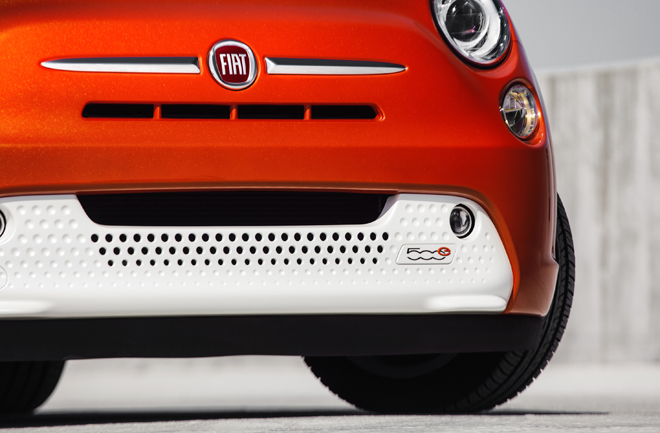
Referring to the summer 2012 design spree of the 500e, Giem recalled, “We built our mules with and without this acoustic package and took senior management through it. We showed them, and it was unanimous. They go ‘holy cow, I can’t believe you took this car and made it that good.’” From there, some of the 500 team members joined up to work on bringing the noise reduction elements to the ICE line as well.
Now, with the 500e at the very cusp of its retail release, it’s been a prolonged wait, but it will be very interesting to finally see if this well-received compliance EV, which is being marketed as a non-electric, and is rousing the rancor of the company’s top executive, will be a hit for FIAT in spite of itself.
“We definitely are on a very slow launch with this just to make sure everything’s perfect,” Giem said. “We’re getting our dealers up to speed, making sure all their charging stations are in, making sure all the replacement parts are available, and getting our containment fleet in the yard so that when we launch to dealers, we actually have enough inventory to use for initial demand. We’re pretty much on track with where we want to be.”
This article originally appeared in Charged Issue 8 – JUN 2013








